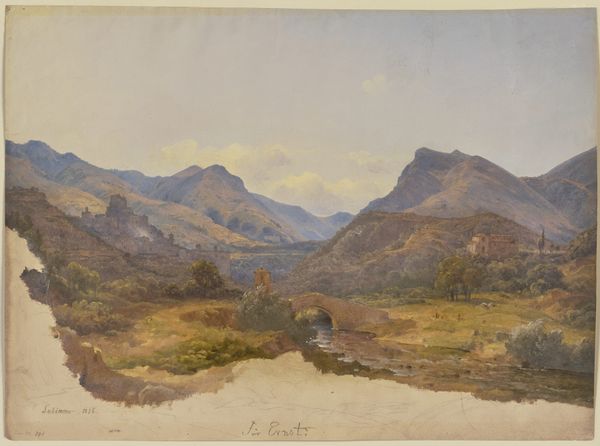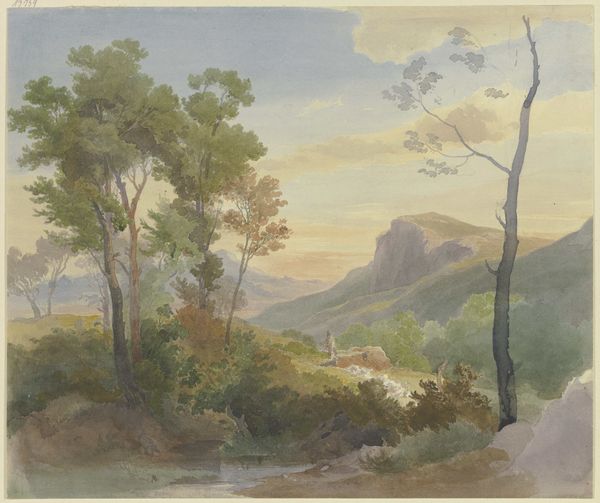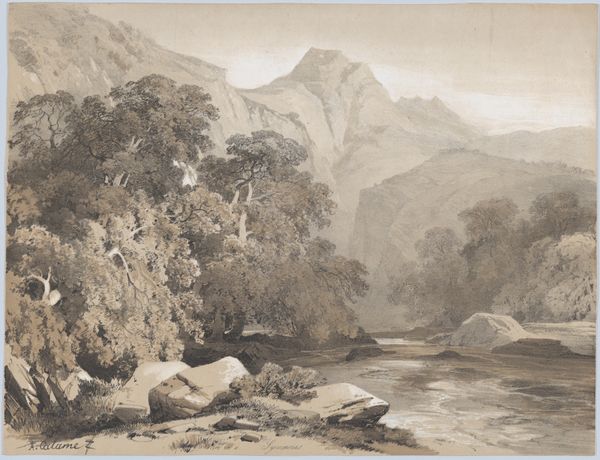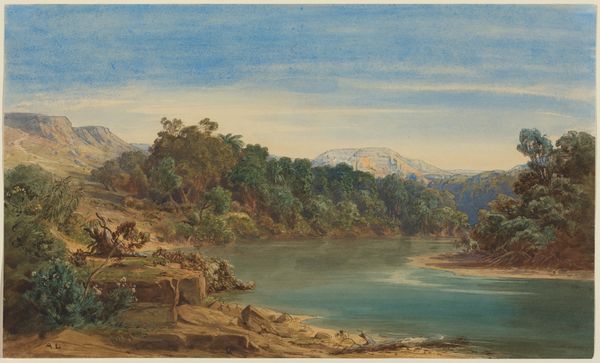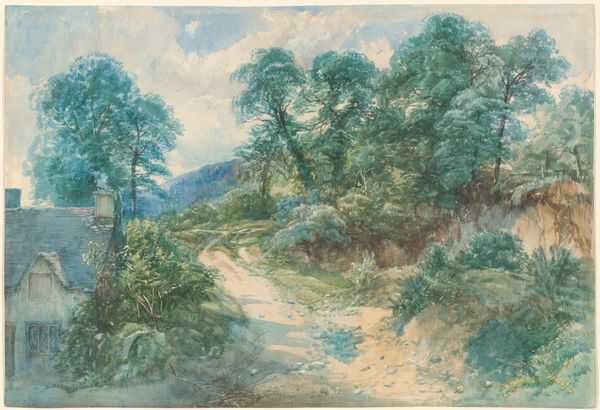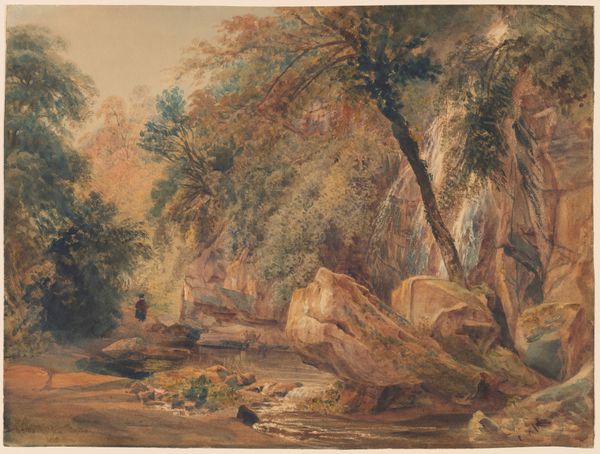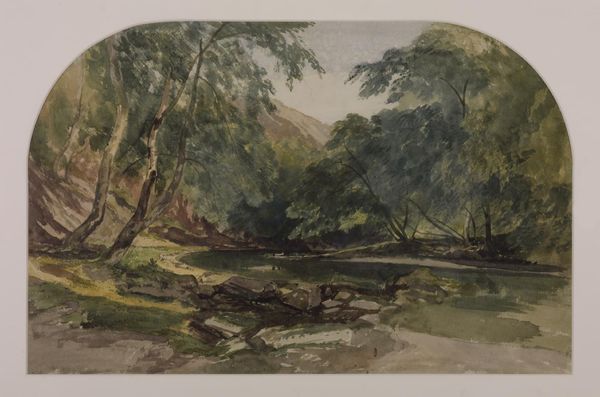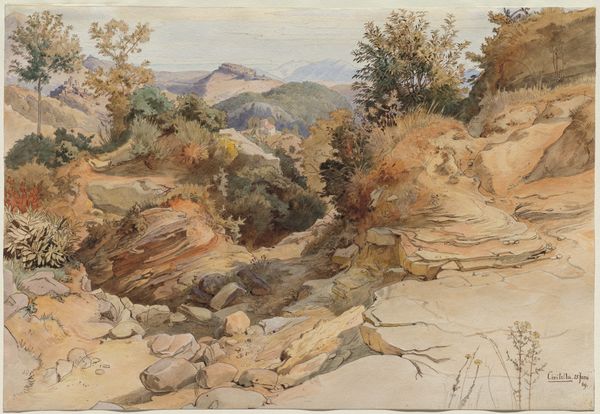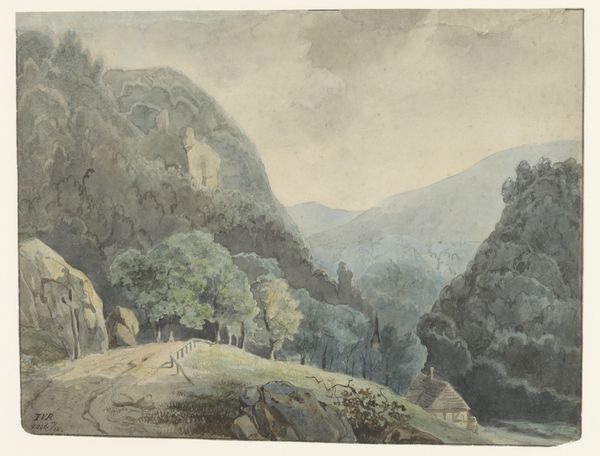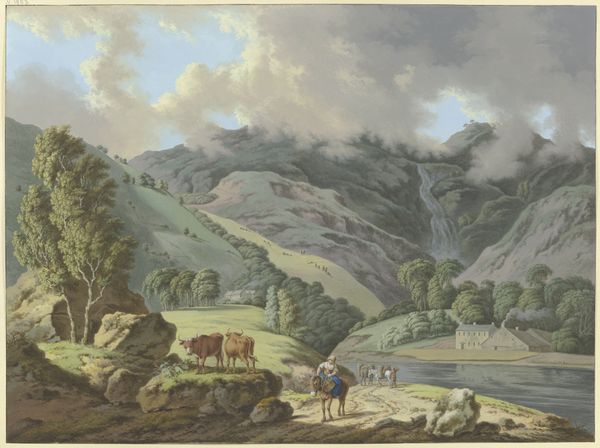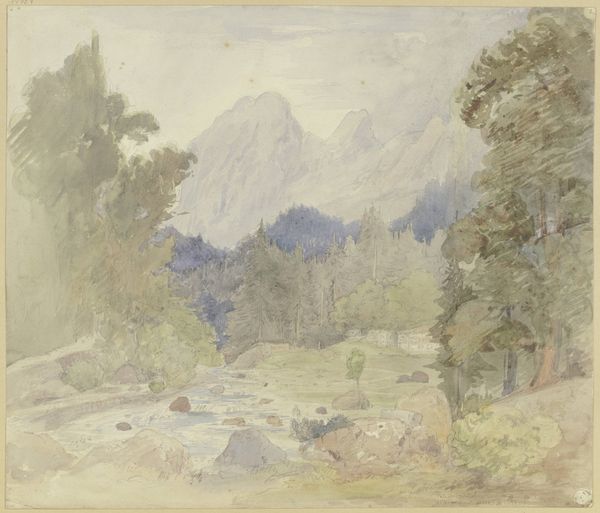
drawing, plein-air, watercolor
#
drawing
#
plein-air
#
landscape
#
figuration
#
watercolor
#
romanticism
#
watercolor
#
realism
#
building
Dimensions: sheet: 10 11/16 x 14 13/16 in. (27.2 x 37.6 cm)
Copyright: Public Domain
Editor: So, this watercolor and graphite drawing is called "Licenza, near Rome: Horace's Villa" by William Havell, created around 1828 or 1829. I'm really struck by the layering of the landscape, the way it feels both detailed and dreamlike at the same time. How do you interpret this work, considering its historical context? Curator: This work, like many landscapes of the period, participates in a dialogue about ownership and representation. Havell, an Englishman, depicts the Italian countryside, a landscape imbued with historical significance – Horace’s villa itself referencing a certain classical ideal. Who has the right to depict and interpret this space? Is it Havell? The descendants of those who lived and worked the land? We must consider how class and nationality play into whose perspective dominates the visual narrative. Do you see any elements in the composition that suggest power dynamics? Editor: I guess the placement of the figures, the travelers and locals. They seem small against the vastness of the land, almost insignificant. It's like nature is dominating, yet their presence shows humans have an impact. Curator: Precisely! And consider the act of landscape painting itself. It’s not simply capturing a scene; it's framing, selecting, and, in a sense, possessing a piece of that world. Think about the implications of that. Who gets to "own" this view? And whose stories are silenced by this picturesque framing? What do you think it says about 19th-century European identity? Editor: I see what you mean. It's not just a pretty picture, it's about power, perspective, and whose voices are amplified or erased. I guess there's a conversation here about art and colonialism? Curator: Absolutely. By acknowledging the power structures inherent in landscape art, we can begin to dismantle the colonial gaze and make space for a more inclusive understanding of art history. Editor: That's fascinating; I will never see landscape the same way! Thanks!
Comments
No comments
Be the first to comment and join the conversation on the ultimate creative platform.
